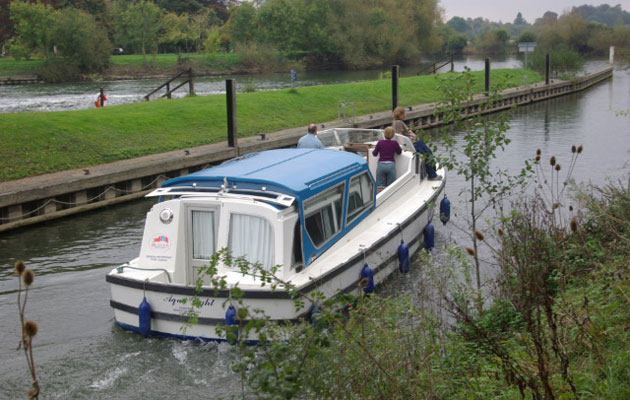The Boat Safety Scheme is urging all boat owners to be aware of carbon monoxide safety advice, following the deaths of two people in Norfolk.
The Boat Safety Scheme (BSS) is reiterating its warning about the dangers of carbon monoxide poisoning after a couple died on their motor cruiser in Norfolk last month.
Alan Frost and Tina Wilkins, along with their pet dog, died on board their boat, Love for Lydia, on the River Bure, near Wroxham Broad.
A postmortem examination confirmed the couple died from carbon monoxide poisoning.
The Boat Safety Scheme’s manager, Graham Watts, is now asking boaters to be “carbon monoxide wise”.
While the source of the carbon monoxide is yet to be confirmed in the Norfolk incident, the BSS is reissuing its general carbon monoxide (CO) safety advice for all boaters.
It hopes this will make sure that everyone is aware of the risks of CO poisoning before stepping aboard.
Carbon monoxide is a colourless, odourless gas, known as the silent killer. It can kill quickly if inhaled in high concentrations.
At lower levels, symptoms of CO poisoning are similar to flu or food poisoning, and include headaches, nausea and dizziness.

The symptoms of CO poisoning. Credit: Boat Safety Scheme
As time passes and/or the amount of CO builds, victims may suffer chest pains and breathlessness leading to seizures and unconsciousness.
If nothing is done, death can happen quickly after that.
The BSS says as a result of this, the early recognition of the symptoms is critical and action to get out to fresh air straight away can save lives.
CO has multiple potential sources on boats including all fuel-burning appliances, flues, chimneys, engine exhausts and charcoal BBQs.
In particular, the Boat Safety Scheme warns that CO build-up in the confined space of boat cabins can occur with one or a mix of these factors:
- with faulty, badly maintained or misused appliances
- exhaust fumes from a boat’s engine or generator
- escaped fuel gases from solid fuel stove
- blocked ventilation or short supply of air-fuels need the right amount of oxygen to burn safely
Boat Safety Scheme Advice on avoiding a carbon monoxide incident is to:
- Know the signs and symptoms of CO poisoning and how to react if is suspected
- Fuel burning appliances should be installed properly by suitably qualified people
- Maintain appliances and engines routinely, competently and without bodges
- Use equipment correctly. Never use cookers for space heating
- Air is vital for fuel-burning appliances – never block ventilation, allow a sufficient supply
- Don’t bring charcoal BBQs on board during or after use – only stone-cold charcoal is safe
- Keep engine fumes out of the cabin, never use a portable generator on the boat
- Know the danger signs, spot potential hazards early
- Deal with problems immediately, never use equipment you suspect has problems
- Install a certified CO alarm (BS EN 50291-2), test it routinely and never remove the batteries
Graham Watts of the Boat Safety Scheme added: “Over a million people go boating free from harm each year, but to go boating safely, the risks need treating with due respect.”
“Carbon monoxide in a small space like a boat cabin has to be avoided. By following the basic advice on our website and by having CO alarms on board as a back-up, you should have a happy and incident-free time afloat,” he said
More information is available at www.boatsafetyscheme.org/co
The Boat Safety Scheme is a public safety initiative owned by the Canal & River Trust and the Environment Agency.
Its purpose is to help minimise the risk of boat fires, explosions, or pollution harming visitors to the inland waterways, the waterways’ workforce and any other users.
Protecting you and your crew from carbon monoxide poisoning
Marine surveyor Tony Skeats talks through the dangers of carbon monoxide poisoning and how you can protect yourself and your…
Lake District: Boat Safety Scheme not ‘comprehensive’
The National Park has decided against the MAIB's recommendation to implement the boat safety scheme.
Boat captain fined in crewman carbon monoxide poisoning case
The Starlight Rays owner must pay £20,000 for a health and safety breach involved in the death of a crewman…
Report confirms carbon monoxide poisoning killed two men in North Yorkshire
Two fisherman died after trying to warm their fishing boat with a gas grill







